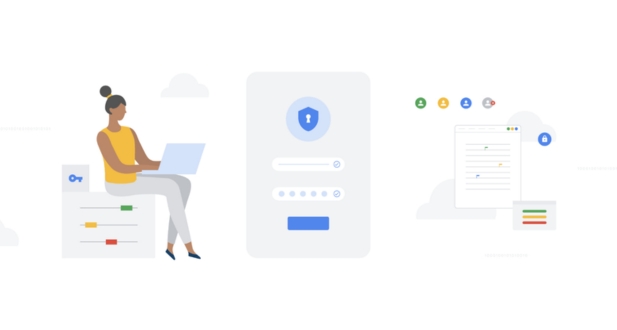Data Privacy Compliance

The Data Revolution:
The term “data revolution” refers to the profound changes in the way data is generated, processed, and analyzed, primarily driven by advancements in technology. This revolution has led to an unprecedented scale of data production, with massive amounts of information being created and collected across various industries and sectors. This influx of data presents both significant opportunities and challenges. On the positive side, organizations can leverage this data for insights, innovation, and strategic decision-making.
The Imperative of Compliance:
As the volume of data grows and instances of data breaches become more prevalent, there is an increasing need for organizations to comply with various regulatory frameworks and standards. The reference to GDPR (General Data Protection Regulation) in Europe and HIPAA (Health Insurance Portability and Accountability Act) in the healthcare sector highlights the diverse and stringent nature of these regulations. Compliance is not just a legal requirement but has become an imperative for maintaining trust with customers, clients, and other stakeholders. Navigating the complex landscape of compliance frameworks is a challenging task for organizations, requiring a thorough understanding of the specific regulations applicable to their industry.
Defining Data Governance:
Data governance is introduced as the systematic management of data assets. This involves a structured approach to ensuring high data quality, effective data management practices, and robust data protection mechanisms. Essentially, data governance serves as the foundation upon which compliance efforts are built. It encompasses policies, processes, and standards that govern how data is collected, stored, processed, and shared within an organization. A well-established data governance framework not only aids in compliance but also contributes to better decision-making, increased operational efficiency, and enhanced data-driven strategies.
The Regulatory Landscape

GDPR: A Global Benchmark
The GDPR, implemented in 2018, emphasizes principles such as data minimization, purpose limitation, and transparency. It gives individuals greater control over their personal data, requiring organizations to obtain clear consent for data processing and to provide easy access to personal information.
Rights Granted to Individuals: GDPR grants individuals various rights, including the right to be forgotten, the right to access their data, and the right to data portability. These empower individuals to have more control over how their personal information is handled.
- Extraterritorial Reach: One of the remarkable aspects of GDPR is its extraterritorial reach. It applies not only to organizations within the European Union but also to those outside the EU that process data related to EU residents. This has compelled companies worldwide to reassess and upgrade their data protection practices.
HIPAA and Healthcare Compliance
- Health Insurance Portability and Accountability Act (HIPAA): HIPAA, enacted in 1996, is crucial for the healthcare sector. It addresses the security and privacy of health data, ensuring the confidentiality of patient information. Compliance involves implementing safeguards, securing electronic health records, and establishing strict access controls.
- Unique Challenges in Healthcare: Healthcare organizations face unique challenges due to the sensitive nature of health data. Balancing the need for data sharing for patient care with maintaining strict confidentiality is a delicate task. The advent of electronic health records (EHRs) has added complexity to data governance in this sector.
- Data Governance in Line with Regulations: To ensure compliance with HIPAA, healthcare organizations must implement robust data governance practices. This includes regular risk assessments, staff training on data security, and the implementation of secure technologies to protect patient information.
Emerging Regulatory Trends
- Technology and New Frameworks: As technology continues to advance, new regulatory frameworks are evolving to address emerging challenges. This includes regulations around artificial intelligence, biotechnology, and the Internet of Things (IoT). Governments and regulatory bodies are adapting to ensure that data protection laws remain relevant and effective in the face of rapidly changing technologies.
- Challenges in Staying Compliant: Organizations face challenges in staying compliant with ever-changing regulations. The pace of technological innovation often outstrips the ability of regulators to keep up. Companies need to be proactive in understanding and adapting to new regulatory requirements to avoid legal and reputational risks.
- International Cooperation: With data flowing seamlessly across borders, there’s a growing need for international cooperation in regulatory efforts. Cross-border data transfer mechanisms and agreements are essential for businesses operating globally to navigate the complexities of various national and regional regulations.
Challenges in Compliance and Data Governance

Data Proliferation:
The challenge of data proliferation arises from the exponential growth of data in today’s digital age. Organizations generate and accumulate vast amounts of data daily, encompassing various formats such as structured, unstructured, and semi-structured data. The sheer volume and diversity of data make it difficult for organizations to keep track of and control all the information in a compliant manner.
- Data Management Strategies: Organizations need robust data management strategies to categorize, organize, and prioritize data. This involves implementing data classification systems, data discovery tools, and metadata management to identify sensitive information and regulate access accordingly.
- Scalable Infrastructure: As data grows, infrastructure must be scalable to accommodate the increasing volume. Cloud solutions, big data technologies, and efficient storage systems are essential for managing data proliferation effectively.
- Data Governance Frameworks: Establishing comprehensive data governance frameworks is crucial. This involves defining policies, procedures, and standards for data management, ensuring compliance with regulations, and assigning responsibilities for data stewardship and oversight.
Cybersecurity Threats:
The evolving nature of cybersecurity threats poses a constant challenge to maintaining compliance. Cyberattacks can compromise sensitive data, leading to severe legal and financial consequences. Integrating cybersecurity measures into data governance is essential for protecting against unauthorized access, data breaches, and other security incidents.
- Continuous Monitoring and Threat Detection: Implementing robust cybersecurity measures involves continuous monitoring of network activities and employing advanced threat detection systems. This enables organizations to identify and respond to potential security breaches promptly.
- Encryption and Access Controls: Utilizing encryption methods and stringent access controls adds an extra layer of protection to sensitive data. This ensures that even if unauthorized access occurs, the data remains unintelligible and inaccessible.
- Employee Training and Awareness: Human error is a significant contributor to cybersecurity threats. Organizations need to invest in employee training programs to raise awareness about security best practices, phishing threats, and the importance of adhering to cybersecurity policies.
Vendor and Third-Party Risk:
Collaboration with external vendors and third parties introduces additional complexities to data governance and compliance efforts. Organizations must be vigilant in assessing and managing the risks associated with sharing data and resources with external entities.
- Due Diligence in Vendor Selection: Before entering into partnerships, organizations should conduct thorough due diligence to assess the security practices and compliance posture of potential vendors. This includes evaluating their data protection measures and adherence to relevant regulations.
- Contractual Agreements: Clearly defined contractual agreements should outline the responsibilities and expectations regarding data protection. This includes specifying the security measures vendors must implement and the consequences for non-compliance.
- Ongoing Monitoring and Auditing: Regular monitoring and auditing of vendor activities are essential to ensure continued compliance. This involves assessing their security practices, reviewing access logs, and conducting periodic security assessments.
Best Practices in Data Governance
Data Classification and Mapping:
- Importance: Understanding the data lifecycle is crucial for effective data governance. Data classification involves categorizing data based on its sensitivity, value, and regulatory requirements. Mapping involves identifying where data resides, how it moves through systems, and who accesses it.
- Implementation: Establish clear guidelines for classifying data, considering factors such as confidentiality, integrity, and availability. Create a comprehensive data map detailing data flows, storage locations, and processing points.
Access Control and Authentication:
- Importance: Controlling access ensures that only authorized personnel can view or manipulate sensitive data, reducing the risk of data breaches and unauthorized use.
- Implementation: Implement role-based access controls (RBAC) to restrict access based on job roles. Utilize strong authentication methods like multi-factor authentication (MFA) to enhance security.
Data Quality Management:
- Importance: Reliable data is essential for informed decision-making. Data quality management focuses on maintaining accuracy, completeness, consistency, and timeliness of data.
- Implementation: Establish data quality standards, implement data validation checks, and regularly cleanse and update data. Create processes for data stewardship to ensure ongoing data quality.
Regular Audits and Assessments:
- Importance: Continuous monitoring and periodic audits help identify and address compliance gaps, security vulnerabilities, and areas for improvement in data governance practices.
- Implementation: Conduct regular audits to assess adherence to data governance policies and regulations. Use automated tools for continuous monitoring, and perform risk assessments to identify potential issues before they escalate.
These best practices collectively form a comprehensive approach to data governance, ensuring that organizations not only comply with regulations but also manage and utilize their data effectively. Regular updates to policies and continuous improvement based on audit findings are crucial to maintaining a robust data governance framework.
Technological Solutions for Compliance
Role of AI and Machine Learning:
- Automation of Processes: AI and ML can automate routine tasks related to data governance and compliance, reducing the reliance on manual intervention. This automation speeds up processes and minimizes the risk of human error.
- Anomaly Detection: These technologies excel at identifying unusual patterns or deviations from the norm in large datasets. This capability is crucial for detecting potential compliance breaches or security threats, allowing organizations to address issues proactively.
- Security Strengthening: AI and ML contribute to bolstering security measures by continuously learning and adapting to new threats. They can analyze vast amounts of data to identify potential vulnerabilities and recommend improvements to enhance overall data security and compliance.
Blockchain in Data Governance:
- Integrity and Transparency: Blockchain’s decentralized and immutable nature ensures the integrity and transparency of data. Once information is added to a blockchain, it becomes nearly impossible to alter, providing a reliable record of all transactions and changes.
- Smart Contracts for Compliance: Smart contracts, self-executing contracts with the terms directly written into code, can be employed to automate and enforce compliance rules. This minimizes the need for intermediaries and ensures that agreements are automatically executed when predefined conditions are met.
- Audit Trail: The distributed and transparent nature of blockchain creates a robust audit trail. This feature is valuable in demonstrating compliance with regulations, as it allows for a clear and traceable history of data-related activities.
Cloud Computing and Data Governance:
- Adaptation of Data Governance Frameworks: Cloud computing requires organizations to adapt their data governance frameworks to the dynamic and distributed nature of the cloud. Policies and controls must be extended to cover data stored, processed, and transmitted in the cloud environment.
- Challenges in Compliance: Migrating to the cloud introduces challenges such as ensuring data sovereignty, addressing potential security concerns, and complying with regional regulations. Organizations need to navigate these challenges to maintain compliance while benefiting from the scalability and flexibility of cloud services.
- Opportunities for Collaboration: Cloud computing facilitates collaboration and information sharing. Effective data governance in the cloud can lead to better collaboration among different departments and stakeholders, streamlining compliance efforts and ensuring a cohesive approach to data management.
Cultural and Organizational Considerations
Building a Culture of Compliance:
- Cultural Shift: Achieving comprehensive compliance involves a fundamental change in the organization’s culture. This means instilling a mindset where compliance is not just a set of rules to be followed but becomes an integral part of the organizational values and operations.
- Top-Down Influence: This cultural shift often starts at the top levels of the organization. Leadership plays a crucial role in setting the tone for compliance. When executives and management prioritize and demonstrate a commitment to compliance, it sends a strong message throughout the organization.
- Employee Behavior: A culture of compliance influences how employees perceive and respond to regulations. It encourages a proactive approach to adhering to policies, procedures, and legal requirements. Employees are more likely to integrate compliance into their daily tasks when it aligns with the organization’s culture.
Training and Awareness Programs:
- Education on Data Governance: To ensure compliance, employees need to understand the importance of data governance – the management and protection of data throughout its lifecycle. This involves training programs that explain the significance of data, potential risks, and the role employees play in maintaining data security.
- Security and Regulatory Awareness: Training and awareness programs aim to make the workforce conscious of security measures and regulatory requirements. This includes educating employees about industry-specific regulations, privacy laws, and best practices for handling sensitive information.
- Continuous Learning: Compliance is an ongoing process, and regulations may evolve. Training programs should be dynamic, keeping employees informed about updates and changes in compliance requirements. This ongoing education helps maintain a vigilant and adaptable workforce.
Creating a culture of compliance involves not only establishing the right policies and procedures but also embedding a mindset that prioritizes adherence to these rules. Training and awareness programs are essential tools for ensuring that all employees understand their role in maintaining compliance and are equipped with the knowledge to do so effectively.
Building Blocks of Comprehensive Data Governance
Data Governance Framework:
- Definition: A data governance framework is a structured set of guidelines, policies, and procedures that define how an organization manages its data assets.
- Roles and Responsibilities: Clearly outlines the roles and responsibilities of individuals within the organization regarding data management. This ensures accountability and clarity in data-related tasks.
- Processes: Establishes the procedures and workflows involved in data management, covering aspects like data collection, storage, processing, and disposal.
- Data Quality, Privacy, and Security: Addresses concerns related to the quality of data, as well as ensuring privacy and security measures are in place. This is critical for maintaining data integrity and protecting sensitive information.
Data Classification and Inventory:
- Data Nature Understanding: Involves categorizing and classifying data based on its nature and sensitivity, distinguishing between different types of information such as public, internal, confidential, or sensitive data.
- Risk Assessment: Helps in assessing the potential risks associated with different types of data, allowing organizations to implement appropriate security measures to protect sensitive information.
- Regulatory Compliance: Aids in compliance with regulations that require specific protections for certain types of data.
Data Privacy and Consent Management:
- Data Usage Policies: Clearly defines how data can be used within the organization, ensuring that there are explicit policies in place to govern data handling.
- Consent Management: Involves obtaining explicit consent from individuals regarding the collection, processing, and usage of their personal data.
- Trust Building: Transparency in data practices helps build and maintain trust with individuals, assuring them that their data is handled responsibly.
Risk Management:
- Proactive Approach: Involves identifying potential risks before they become issues, allowing organizations to be proactive in addressing and mitigating these risks.
- Impact Assessment: Evaluates the potential impact of risks on the organization’s data assets and overall operations.
- Continuous Compliance: Ensures that the organization stays compliant with evolving regulations by regularly assessing and adapting to emerging threats.
Employee Training and Awareness:
- Education Programs: Involves comprehensive training programs to educate employees about their role in maintaining data integrity and security.
- Importance of Compliance: Communicates the significance of compliance with data governance policies and the potential consequences of non-compliance.
- Best Practices: Provides guidelines and best practices for handling sensitive information, minimizing the risk of human error in data management.
Future Trends
Continued Regulatory Evolution:
- Dynamic Regulatory Landscape: The statement suggests that the regulatory environment concerning data will keep evolving. This is in response to technological advancements and emerging challenges. For organizations, this means that compliance is not a one-time task but an ongoing process that requires adaptability and proactiveness.
- Forward-Looking Approach: Organizations are encouraged to take a proactive stance, anticipating and adapting to changes in regulations. This implies the need for continuous monitoring of the regulatory landscape and a willingness to adjust governance strategies accordingly.
Ethical Considerations in Data Governance:
- Beyond Legal Compliance: While legal compliance is crucial, the narrative emphasizes the rising importance of ethical considerations. This involves organizations not just adhering to laws but also incorporating ethical standards into their data practices.
- Fairness, Transparency, and Accountability: Upholding ethical standards includes ensuring fairness in data usage, maintaining transparency about data practices, and being accountable for the consequences of data-related decisions. This reflects a broader societal expectation for responsible and ethical data handling.
Global Collaboration on Standards:
- Global Nature of Data Flows: Acknowledging the international aspect of data movement, there is a call for standardized approaches to data governance. As data crosses borders, having common standards can facilitate compliance for organizations operating in multiple jurisdictions.
- Open Data Governance Consortium: The mention of initiatives like the Open Data Governance Consortium indicates a move towards collaborative efforts to establish global standards. Such consortia or collaborative platforms aim to bring together experts and stakeholders to create harmonized frameworks for data governance.
The future of comprehensive compliance and data governance involves staying agile in response to evolving regulations, placing a heightened emphasis on ethical considerations, and fostering global collaboration to establish standardized approaches for managing data responsibly across borders.
Conclusion
- The Ongoing Journey
Concluding thoughts on the continuous nature of compliance and data governance. The journey toward comprehensive security is ongoing, and organizations must remain vigilant in the face of evolving threats and regulations.
- The Path Forward
Outlining key takeaways and recommendations for organizations striving to enhance their data governance and compliance practices.
In conclusion, the landscape of compliance and data governance is intricate and ever-evolving. Organizations must proactively adapt to stay ahead of regulatory changes, technological advancements, and emerging threats. Through a combination of robust frameworks, technological solutions, and a cultural commitment to security, organizations can navigate this complex terrain and safeguard their most valuable asset – data.
Ensuring compliance and strong data governance protects sensitive information, builds trust with stakeholders, and helps avoid legal and financial repercussions.
It can address various regulations such as GDPR, HIPAA, SOX, and other industry-specific or regional data protection laws.
Data Governance is a broader concept involving the overall management of data, while Data Compliance specifically focuses on adherence to regulatory requirements.
Establishing clear data ownership, defining policies, implementing data quality controls, and conducting regular audits are key steps.
It enhances data security by implementing measures to protect against unauthorized access, data breaches, and ensuring secure data transmission.
Technology, such as data encryption, access controls, and monitoring tools, is crucial for automating and enforcing compliance measures.
Organizations can achieve this by fostering a culture of data responsibility, providing training, and implementing centralized data management tools.








